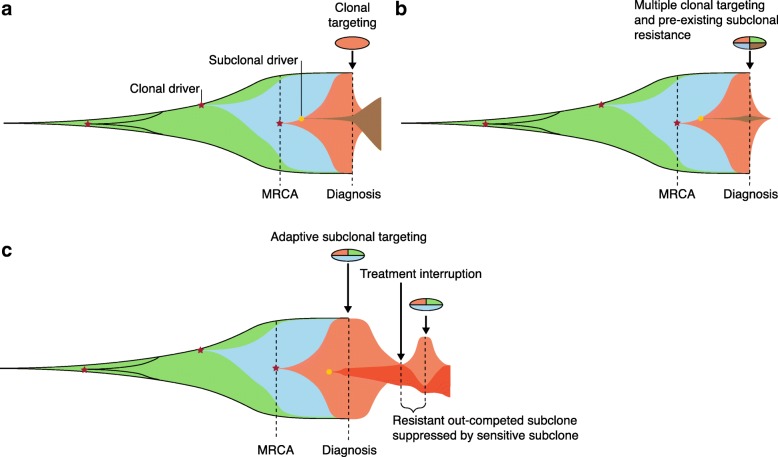Fig. 2.
Evolutionary therapy strategies. Schematics of tumor populations in which each different color implies a new subclonal population. Therapies are denoted by segmented ovals, in which the targeted populations are indicated by the segment shading. a Targeting a clonal mutation that developed in or prior to the most recent common ancestor (MRCA). Resistance may emerge because a (rare) subclone with intrinsic resistance to that therapy (for example, an ESR1-activating mutation) existed prior to therapy. b Targeting of multiple drivers is more likely to lead to tumor extinction. c In adaptive therapy, treatment is discontinued before sensitive cells (pink) are eliminated, allowing them to grow back and suppress resistant cells (red). The resistant subclone would be expected to have an intrinsic survival disadvantage that is related to its resistant phenotype, for example, it may have lost the targeted driver mutation

